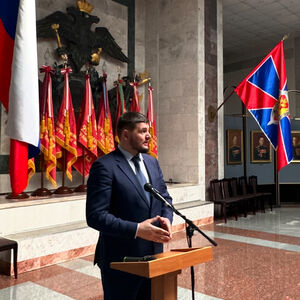Диссертация (1139542), страница 53
Текст из файла (страница 53)
‒ P. 629634.Gibson P. G., Powell H., Coughlan J., et al. Limited (information only) patient educationprograms for adults with asthma. // Cochrane Database Syst Rev. ‒ 2002. № 2. ‒ P.CD001005.Gibson P. G., Simpson J. L., Saltos N. Heterogenity of airway inflammation in persistetasthma. // Chest. ‒ 2001. ‒ V. 119. ‒ P. 1329-1336.GINA. Global strategy for asthma management and prevention 2014 (Revision). //http://www.ginasthma.org/local/uploads/files/GINA_Report_2014_Aug12.pdf. ‒ 2014.GINA.
Global strategy for asthma management and prevention 2015 (Revision). – 2015. ‒http://www.ginasthma.org/local/uploads/files/GINA_Report_2015.pdf.GINA. Global strategy for asthma management and prevention. Updated 2011. //http://www.ginasthma.org/uploads/users/files/GINA_Report_2011.pdf. ‒ 2011.Giovannini-Chami L., Albertini M., Scheinmann P., de Blic J.
New insights into thetreatment of severe asthma in children. // Paediatr Respir Rev. ‒ 2014. ‒ V. Aug, № 1. ‒ P.1526-1542.Godon P., Boulet L. P., Malo J. L., Cartier A., Lemière C. Assessment and evaluation ofsymptomatic steroid-naive asthmatics without sputum eosinophilia and their response toinhaled corticosteroids. // Eur Respir J.
‒ 2002. ‒ V. 20, № 6. ‒ P. 1364-1369.Gomersal T., Harnan S., Essat M., Tappenden P., al. e. A systematic review of fractional300258259260261262263264265266267268269270271272273274275276277278exhaled nitric oxide in the routine management of childhood asthma. // Pediatr Pulmonol. 2016. ‒ P. 316-328.Gomes E. L. F. D., Costa D. Evaluation of functional, autonomic and inflammatoryoutcomes in children with asthma. // World J Clin Cases. ‒ 2015 ‒V. 3, № 3.
‒ P. 301-309.Gomes E. L. F. D., Sampaio L. M. M., Carvalho E. F. T., al. E. Comparative analysis ofautonomic modulation in children with acute and controlled asthma. // Med Scie Tech. ‒2013. ‒ V. 54, № 30-34.Grad R., McClure L., Zhang S., Mangan J., et al. Peak Flow Measurements in Children withAsthma: What Happens at School? // Asthma. ‒ 2009 ‒V.
46 №6. ‒ P. 535-540.Green R. J., Klein M. What is meant by control of childhood asthma? Asthma can now becontrolled, but assessing control may not be that easy. // Continuing Medical Education. ‒2010. ‒ V. 28, № 9. ‒ P. 408-410.Greenberg S. S., Xie J., Spitzer J. J., Wang J. F., Lancaster J., Grisham M. B., Powers D.
R.,Giles T. D. Nitro containing L-arginine analogs interfere with assays for nitrate and nitrite.// Life Sci. ‒ 1995. ‒ V. 57, № 21. ‒ P. 1949-1961.Greenwald R., Ferdinands J. M., Teague W. G. Ionic determinants of exhaled breathcondensate pH before and after exercise in adolescent athletes. // Pediatric Pulmonology. ‒2009. ‒ V. 44 №8. ‒ P.
768-777.Griess P. Bemerkungen zu der Abhandlung der HH. Weselky und Benedikt "Ueber einigeAzoverbindungen". // Berichte der Deutschen chemischen Gesellschaft. ‒ 1879. ‒ V. 12. ‒P. 426-428.Grob N. M., Dweik R. A. Exhaled nitric oxide in asthma. From diagnosis, to monitoring, toscreening: are we there yet? // Chest. ‒ 2008. ‒ V. 133, № 4.
‒ P. 837-839.Groneberg D. A., Quarcoo D., al. e. "Neurogenic mechanisms in bronchial inflammatorydiseases." // Allergy. ‒ 2004. ‒ V. 59, № 11. ‒ P. 1139-1152.Grossman J. One airway, one disease. // Chest. ‒ 1997. ‒ V. 111, № 2 Suppl.
‒ P. 11S-16S.Guevara I., Iwanejko J., Dembinska-Kiec A., al. e. Determination of nitrite / nitrate inhuman biological material by the simple Griess reaction. // Clin. Chim. Acta. ‒ 1998. ‒ V.274, № 2. ‒ P. 177.Guilbert T. W., Morgan W. J., Zeiger R. S., al. e. Long-term inhaled corticosteroids inpreschool children at high risk for asthma.
// N Engl J Med ‒2006. № 354. ‒ P. 1985-1997.Gupta J., Dube A., Singh V., Gupta R. Spectral analysis of heart rate variability in bronchialasthma patients. // Indian J Physiol Pharmacol. . ‒ 2012. ‒ V. 56, № 4. ‒ P. 330-336.Gustafsson L. E., al. E. Endogenous nitric oxide is present in exhaled air of rabits, guineapig and humans.
// Biochem Biophys Res Commun. ‒ 1991. ‒ V. 181. ‒ P. 852-857.Haddad E. B., Мak J. C., et al. Muscarinic and beta-adrenergic receptor expression inperipheral lung from normal and asthmatic patients. // Am. J. Physiol. Lung Cell Mol.Physiol. ‒ 1996. ‒ V. 270, № 6. ‒ P. 947-953.Hahn D. L., Webley W. Chronic Chlamydia pneumoniae lung infection: a neglectedexplanation for macrolide effects in wheezing and asthma? // Lancet Respir Med.
- 2016. ‒V.4. №3. - P. e8.Halbert R. J., Tinkelman D. G., Globe D. R., Lin S. L. Measuring asthma control is the firststep to patient management: a literature review. // J Asthma. ‒ 2009. ‒ V. 46, № 7. ‒ P. 659664.Hallstrand T. S. New insights into pathogenesis of exercise-induced bronchoconstriction. //Curr Opin Allergy Clin Immunol. ‒ 2012. ‒ V. 12, № 1.
‒ P. 42-48.Hamid Q., Tulic M. K. New insights into the pathophysiology of the small airways inasthma. // Annals of Thoracic Medicine. ‒ 2007. ‒ V. 2, № 1. ‒ P. 28-33Hanxiang N., Jiong Y., Yanwei C., al. e. Persistent airway inflammation and bronchialhyperresponsiveness in patients with totally controlled asthma.
// Int J Clin Pract ‒2008. ‒V. 62, № 4. ‒ P. 599-605.He X. Y., Simpson J. L., Wang F. Inflammatory phenotypes in stable and acute childhood301279280281282283284285286287288289290291292293294295296297298299asthma. // Paediatr Respir Rev. ‒ 2011. ‒ V. 12, № 3. ‒ P.
165-169.Heart rate variability: standards of measurement, physiological interpretation and clinicaluse. Task Force of the European Society of Cardiology and the North American Society ofPacing and Electrophysiology. // Circulation. ‒ 1996. ‒ V. 93, № 5. ‒ P. 1043-1065.Henricks P. A., Nijkamp F. P. Reactive oxygen species as mediators in asthma // PulmPharmacol Ther. ‒ 2001. ‒ V. 14, № 6. ‒ P.
409-20.Hesslinger C., Strub A., Boer R., Ulrich W. R., et al. Inhibition of inducible nitric oxidesynthase in respiratory diseases. // Biochem Soc Trans. ‒ 2009 ‒V. 37, № 4. ‒ P. 886-891.Hofstra W. B., Neijens H. J., Duiverman E. J., al. e. Dose-responses over time to inhaledfluticasone propionate treatment of exercise- and methacholine-induced bronchoconstrictionin children with asthma. // Pediatr Pulmonol ‒2000. ‒ V. 29, № 6. ‒ P. 415-423.Holgate S. T. A look at the pathogenesis of asthma: the need for a change in direction.
//Discov Med. ‒ 2010 ‒V. 9, № 48. ‒ P. 439-447.Holgate S. T. Pathogenesis of Asthma // Clinical & Experimental Allergy. ‒ 2008. ‒ V. 38,№ 6. ‒ P. 872-897.Holgate S. T., Arshad H. S., Roberts G. C., Howarth P. H., Thurner P., Davies D. E. A newlook at the pathogenesis of asthma. // Clinical Science. ‒ 2009. № 118.
‒ P. 439-450.Holgate S., Bisgaard H., Bjermer L., Haahtela T., Haughney J., Horne R., McIvor A.,Palkonen S., Price D. B., Thomas M., Valovirta E., Wahn U. The Brussels Declaration: theneed for change in asthma management. // Eur Respir J. ‒ 2008. ‒ V. 32. ‒ P. 1433-1442.Holgate S., Smith N., Massanari M., Jimenez P. Effects of omalizumab on markers ofinflammation in patients with allergic asthma. // Allergy. ‒ 2009.
‒ V. 64, - № 12. ‒ C.1728-36.Holguin F. Oxidative stress in airway diseases. // Annals of the American Thoracic Society.– 2013. ‒ C. S150-S157.Holt P. G., Sly P. D. Viral infections and atopy in asthma pathogenesis: new rationales forasthma prevention and treatment. // Nat Med. . ‒ 2012. ‒ V. 18, № 5. ‒ P. 726-735.Hoskins A., Reiss S., Wu P., al. E.
Asthmatic airway neutrophilia after allergen challenge isassociated with the glutathione S-transferase M1 genotype // Am J Respir Crit Care Med. . ‒2013 ‒V. 187, № 1. ‒ P. 34-41.Hosoki K., Nakamura A., Kainuma K., Sugimoto M., al. E. Differential activation ofeosinophils by bacteria associated with asthma. // Int Arch Allergy Immunol. ‒ 2013. ‒ V.161, № Suppl 2.
‒ P. 16-22.Hung C. H., Lee M. Y., Tsai Y. G., Cheng S. N., Yang K. D. Hyposensitization therapyreduced exhaled nitric oxide in asthmatic children with corticosteroid dependency // ActaPaediatr Taiwan. ‒ 2004. ‒ V. 45, № 2. ‒ P. 89-93.Hunt J. Exhaled Breath Condensate: an evolving tool for noninvasive evaluation of lungdisease. // J Allergy Clin Immunol. ‒ 2002. ‒ V. 110, № 1.
‒ P. 28-34.Hunt J. F., Fang K., Malik R., Snyder A., Malhotra N., Platts-Mills T. A., Gaston B.Endogenous airway acidification. Implications for asthma pathophysiology // Am J RespirCrit Care Med. ‒ 2000. ‒ V. 161, № 3 Pt 1. ‒ P. 694-699.Janssen-Heininger Y., Ckless K., Reynaert N., van der Vliet A. SOD inactivation in asthma:bad or no news? // Am J Pathol. ‒ 2005. ‒ V. 166, № 3. ‒ P. 649-652.Jartti T. T. Asthma, asthma medication and autonomic nervous system dysfunction. //Clinical Physiology. ‒ 2001.
‒ V. 21, № 2. ‒ P. 260-269.Jartti T. T., Tahvanainen K. U. O., al. e. Cardiovascular autonomic regulation in asthmaticchildren evidenced by spectral analysis of heart rate and blood pressure variability. // Scand.J. Clin. Lab. Invest. ‒ 1996. ‒ V. 56, № 6. ‒ P. 545-554.Jenkins C. R., Thien F. C. K., Wheatley J. R., Reddel H. K. Traditional and patient-centredoutcomes with three classes of asthma medication. // Eur Respir J. ‒ 2005. ‒ V.
2005, № 26.‒ P. 36-44.Johnston S. J., Martin R. J. Chlamydophila pneumoniae and Mycoplasma pneumoniae. A302300301302303304305306307308309310311312313314315316317318319Role in Asthma Pathogenesis? // Am J Respir Crit Care Med. ‒ 2005. ‒ V. 172. ‒ P. 10781089.Jones S. L., Kittelson J., Cowan J. O., Flannery E. M., Hancox R. J., McLachlan C. R.,Taylor D.
R. The predictive value of exhaled nitric oxide measurements in assessingchanges in asthma control // Am J Respir Crit Care Med. ‒ 2001. ‒ V. 164, № 5. ‒ P. 73843.Joos G. F., O’Connor B., Anderson S. D., et al. Indirect airway challenges. // Eur Respir J. ‒2003. ‒ V. 21, № 6. ‒ P. 1050-1068.Jousilahti P., Salomaa V., Hakala K., et al. The association of sensitive systemicinflammation markers with bronchial asthma. // Ann Allergy Asthma Immunol.
‒ 2002. ‒V. 89, № 4. ‒ P. 381-385.Juniper E. F., Bousquet J., Abetz L., Bateman E. D. Identifying "well-controled" and "notwell controled" asthma using the asthma control qwestionnaire. // Respiratory Medicine. ‒2006. ‒ V. 100. ‒ P. 616-621.Juniper E. F., Gruffydd-Jones K., Ward S., Svensson K. Asthma control questionnaire inchildren validation, measurement properties, interpretation. // Eur Respir J. ‒ 2010. № 7.
















